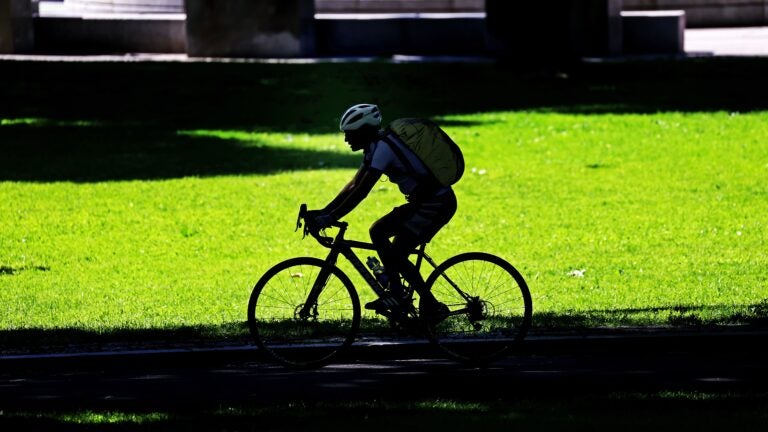Local News
A new city ordinance aims to increase safety and accessibility for bikers and other pedestrians.
The Somerville City Council passed an ordinance last week that requires the city to build 29 miles of protected bike lanes by 2030, as well as improve accessibility and safety for all pedestrians.
The council passed the Safe Streets Ordinance unanimously on June 13. The law mandates that the city build at least three miles of bike lanes per year, and enhance sidewalks and crosswalks to increase pedestrian safety and accessibility when pursuing new developments.
The law is a step forward for the city’s Vision Zero Action Plan, a campaign focused on reducing and eliminating transportation injuries.
“Building safe streets is urgent, life-saving work. And while we’ve made great progress, there is still much more to be done. Our ‘Safe Streets’ ordinance commits us to continue accelerating the pace of change,” said Somerville Mayor Katjana Ballantyne in a statement.
Councilor at Large Willie Burnley Jr. was a leading proponent of the ordinance. Multiple organizations worked on it, including the Somerville Alliance for Safe Streets, the Commission for Persons with Disabilities, and Union Square and East Somerville Main Streets, according to Burnley.
Bike lane ordinance has been in the works for nearly two years
Work on the Safe Streets Ordinance began in 2022 after the death of Stephen Conley, a 70-year-old Somerville resident who died after crashing into an open car door while biking in a designated lane.
“We knew then as we know now, thoughts and prayers aren’t enough. We need legislative and policy action,” Burnley said in a post on X.
The ordinance provides a framework for advancing a number of the city’s transportation safety goals, including Somerville’s Complete Streets approach and Bicycle Network Plan. The former is an initiative to provide residents access to safe transportation that doesn’t rely on cars, and the latter aims to have 15 percent of residents traveling by bike by 2050, among other goals.
The Bicycle Network Plan describes protected bike lanes as those with separation — like raised concrete or bollards — from traffic on roads with higher vehicular speeds and volumes. Other safety proposals include “traffic calming” techniques such as speed bumps, crossing islands, and neighborhood traffic circles.
The Safe Street Ordinance requires the city to meet the goals outlined in its Vision Zero plan, partly by mandating that the city enhance sidewalks and crosswalks when major street reconstruction is done.
The ordinance also lays out a number of steps to hold the city accountable. When the city deems it “impractical” to meet certain design standards, it must submit a public report to the city council explaining its reasoning and offering alternate solutions.
Starting in March of 2025, the city will be required to report on the progress it has made, partly through a website that will track where bike lanes have been built.
Nearby city’s plans to increase bike lanes have faced backlash from residents
In his post, Burnley pointed out that Somerville’s plan to build three miles of bike lanes per year is more ambitious than what’s outlined in Cambridge’s Cyclist Safety Ordinance, on which the Safe Streets Ordinance is based.
Cambridge’s proposal, first passed in 2019, laid out plans to build 25 miles of bike lanes within seven years, or in May of 2026. In April, the city council voted to extend the deadline for the city to complete the ordinance to November 2027.
Boston has a similar plan to build more separated bike lanes and traffic-calmed streets. The city began construction on a Boylston Street bike lane last week as part of its plan to add 10 new miles of bike lanes in the next year.
The city’s construction has faced pushback from businesses and residents, who told WCVB that they are concerned about capacity for vehicles and parking.
Burnley said Somerville’s proposal emphasizes the need to maintain or increase the number of accessible parking spaces in the city.
“Balancing the needs of all road users was at the heart of this ordinance,” Burnley wrote on X. “The bill ensures that, when overall parking is reduced to install bike lanes, accessible parking would be maintained as much as possible and when feasible and safe to do so.”
Newsletter Signup
Stay up to date on all the latest news from Boston.com
